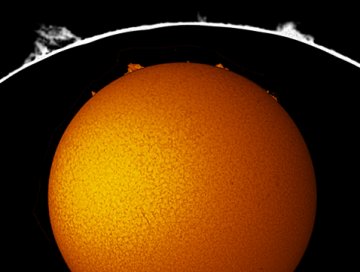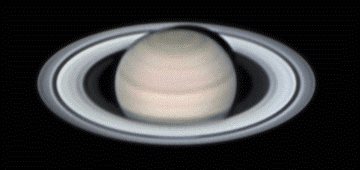 The space station is visible in the night sky this month. Would you like to see it? Sign up for Spaceweather PHONE.
The space station is visible in the night sky this month. Would you like to see it? Sign up for Spaceweather PHONE.
QUIET SUN: There are only a few small spots on the sun today, and neither poses a threat for flares. That means solar activity is low. Or is it? Continued below...
ACTIVE SUN: "Today is a nice day for sungazing," says Greg Piepol of Rockville, Maryland, who photographed at least five prominences dancing along the limb of the sun on March 16th:

The sun on March 16th, as seen through a Coronado telescope.
Although they resemble flames, prominences are not fire. They are clouds of hot gas held aloft by magnetic force fields. And because prominences do not depend on sunspots for their magnetism, they are visible even during the lowest ebb of the sunspot cycle--like now.
more images: from John Stetson of Falmouth, Maine; from Mike Strieber of Newport News, Virginia; from Gary Palmer of Los Angeles, California; from Peter Paice of Belfast, Northern Ireland;
SATURN'S RINGS: Saturn's rings are vanishing! No need to panic, it's happened before. As Saturn goes around the sun, it occasionally turns its rings edge-on to Earth. Because the rings are so thin, they disappear when viewed through a small telescope.
The next "ring plane crossing" isn't due until 2009. Already, though, we can see the process at work. Witness this 3-year animation assembled by Alan Friedman from pictures he has taken from his backyard in Buffalo, New York, between 2004 and 2006:

Animation credit: Alan Friedman and Richard Bosman
In the years ahead, Saturn's rings will become thinner and thinner until, on Sept. 4, 2009, they will briefly disappear. When this happened to Galileo in 1612, he temporarily abandoned his study of the planet. Big mistake: ring plane crossings are good times to discover new moons and faint outer rings.

